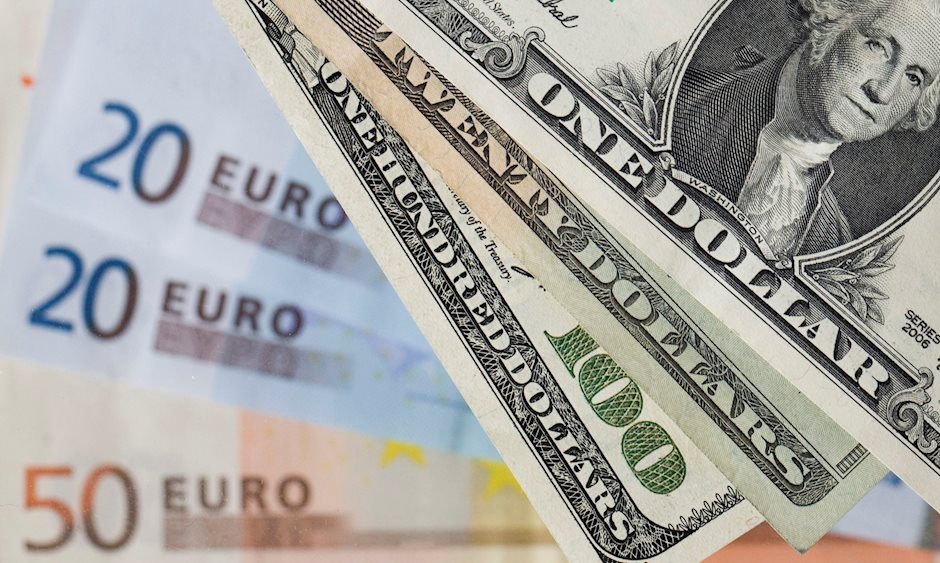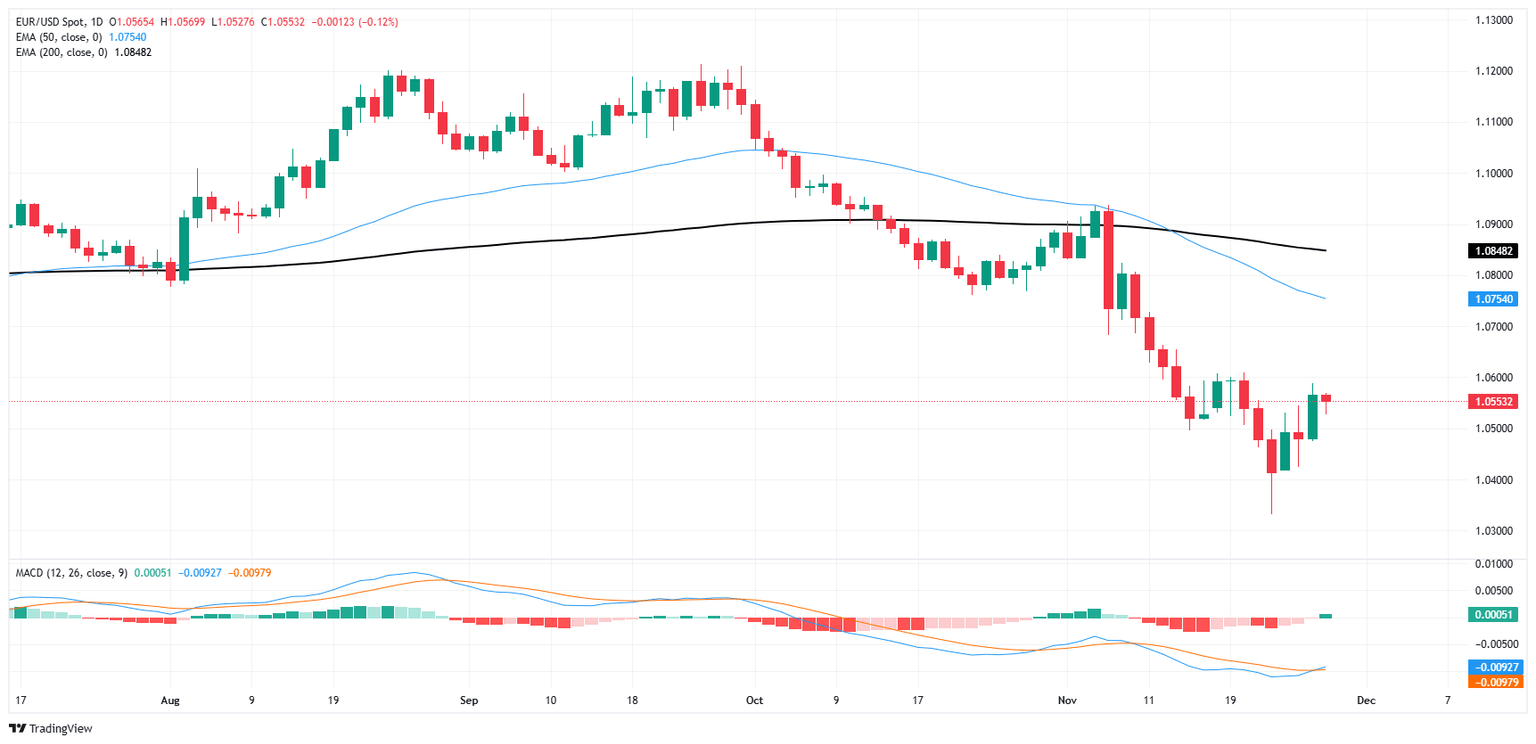EUR/USD treads water ahead of key EU inflation print
- EUR/USD failed to make any progress toward 1.0600, but is still holding steady.
- Holiday-thinned US markets kneecapped market volumes on Thursday.
- Shortened US hours will also trim volumes on Friday, but EU HICP inflation could spark a move.

EUR/USD churned chart paper just south of the 1.0600 handle on Thursday, failing to extend Fiber’s recent bullish recovery but not losing any ground either. Market volumes were constrained on Thursday with US markets dark for the Thanksgiving holiday, and Friday will likewise see crimped liquidity during the US session to wrap up the trading week.
A fresh batch of pan-EU inflation figures are due on Friday, which could see the Euro take a leg higher rounding the corner into the weekend, however Fiber traders have had little reason to bid EUR/USD as of late. The key figures for Fiber will be pan-EU Harmonized Index of Consumer Prices (HICP) inflation. Core HICP inflation is forecast to tick upwards to 2.8% YoY in November from the previous 2.7%, which will throw a wrench in the works for several European Central Bank (ECB) officials who have hit newswires this week trying to soothe investors with promises of further rate cuts in December and heading into 2025.
On the Greenback side, next Friday’s US Nonfarm Payrolls (NFP) jobs report, scheduled for December 6, will be the big figure to watch. Next week’s NFP will take on renewed importance for traders now that watching for signs of rate cuts from the Federal Reserve (Fed) has taken a backseat as of late. However, a large move in either direction in NFP figures could jolt Treasury rates, sparking fresh fears of either too many or too few rate cuts heading into 2025.
EUR/USD price forecast
The Euro’s much-needed bullish reprieve on Wednesday gave Fiber bulls a chance to put more distance between themselves and the pair’s latest swing low below the 1.0400, but not by much. EUR/USD is poised for a battle with the 1.0600 handle, and even a victory on the key technical level still sees further topside momentum running aground of a quickly-descending 50-day Exponential Moving Average (EMA) falling through 1.0750.
EUR/USD daily chart

Euro FAQs
The Euro is the currency for the 19 European Union countries that belong to the Eurozone. It is the second most heavily traded currency in the world behind the US Dollar. In 2022, it accounted for 31% of all foreign exchange transactions, with an average daily turnover of over $2.2 trillion a day. EUR/USD is the most heavily traded currency pair in the world, accounting for an estimated 30% off all transactions, followed by EUR/JPY (4%), EUR/GBP (3%) and EUR/AUD (2%).
The European Central Bank (ECB) in Frankfurt, Germany, is the reserve bank for the Eurozone. The ECB sets interest rates and manages monetary policy. The ECB’s primary mandate is to maintain price stability, which means either controlling inflation or stimulating growth. Its primary tool is the raising or lowering of interest rates. Relatively high interest rates – or the expectation of higher rates – will usually benefit the Euro and vice versa. The ECB Governing Council makes monetary policy decisions at meetings held eight times a year. Decisions are made by heads of the Eurozone national banks and six permanent members, including the President of the ECB, Christine Lagarde.
Eurozone inflation data, measured by the Harmonized Index of Consumer Prices (HICP), is an important econometric for the Euro. If inflation rises more than expected, especially if above the ECB’s 2% target, it obliges the ECB to raise interest rates to bring it back under control. Relatively high interest rates compared to its counterparts will usually benefit the Euro, as it makes the region more attractive as a place for global investors to park their money.
Data releases gauge the health of the economy and can impact on the Euro. Indicators such as GDP, Manufacturing and Services PMIs, employment, and consumer sentiment surveys can all influence the direction of the single currency. A strong economy is good for the Euro. Not only does it attract more foreign investment but it may encourage the ECB to put up interest rates, which will directly strengthen the Euro. Otherwise, if economic data is weak, the Euro is likely to fall. Economic data for the four largest economies in the euro area (Germany, France, Italy and Spain) are especially significant, as they account for 75% of the Eurozone’s economy.
Another significant data release for the Euro is the Trade Balance. This indicator measures the difference between what a country earns from its exports and what it spends on imports over a given period. If a country produces highly sought after exports then its currency will gain in value purely from the extra demand created from foreign buyers seeking to purchase these goods. Therefore, a positive net Trade Balance strengthens a currency and vice versa for a negative balance.
Author

Joshua Gibson
FXStreet
Joshua joins the FXStreet team as an Economics and Finance double major from Vancouver Island University with twelve years' experience as an independent trader focusing on technical analysis.

















